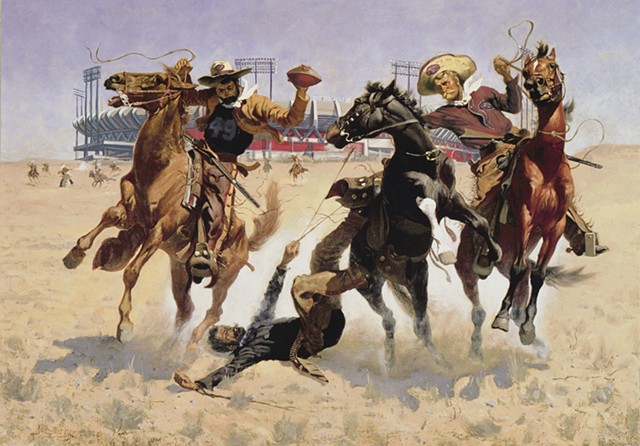Sports
To Understand the history of American team sports is to understand our national development. From our rural, agrarian beginnings comes baseball: originally played during the day, on a “field”, tethered to the elements, with no clock, rife with personal failure, overcome. Out of the Industrial Revolution came football. The synchronicity of specialized moving parts, the restrictions of performing tasks within a time limit, the taking of land by force-a blithe reflection of a nation at work and at war. The post-industrial era saw a rise in the popularity of basketball. Free-formed and creative, individualism within a collaborative scheme, stripped of gear and protection and played at a continuous pace. The “big three”American sports are, at their core, representations of our past and so they embody our parochial and national allegiances, and in part define our ethos.
The games that professionals play are staged in architectural wonders only found in urban centers. The modern sports stadia are “homes”, cathedrals to their sport, icons of urban planning, and big time money makers. They are triumphs over nature, with vast fields of perfect grass grown partially indoors when retractable roofs stave off the harsher elements. They are gleaming examples of man vs. nature and again mirror the moment when Americans' roots were re-planted into city plots. The stadia are visible signs of bustling urban development and activity, in spite of the fact that they sit idle for half a year, every year. After the crowds disperse and fireworks fade, we are left with grand sporting vistas, quiet pilgrimage sites for dedicated and decorated masses.
